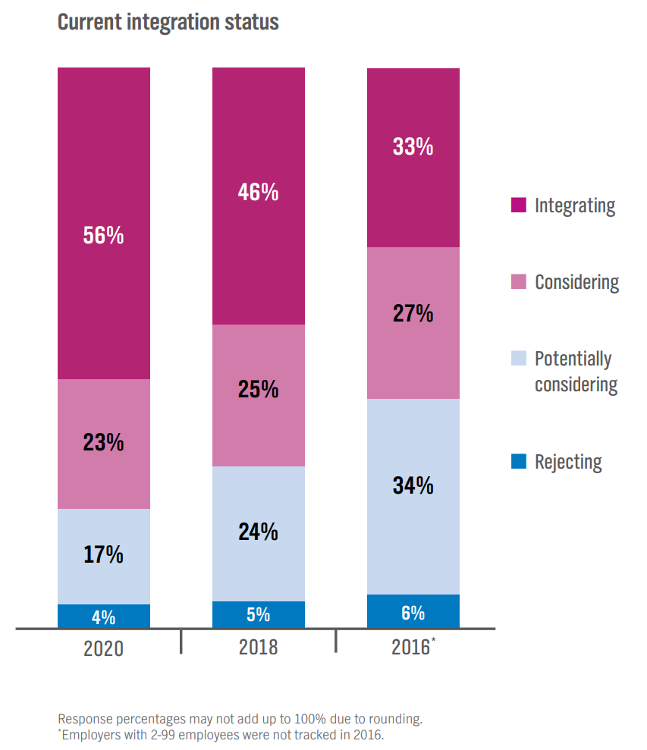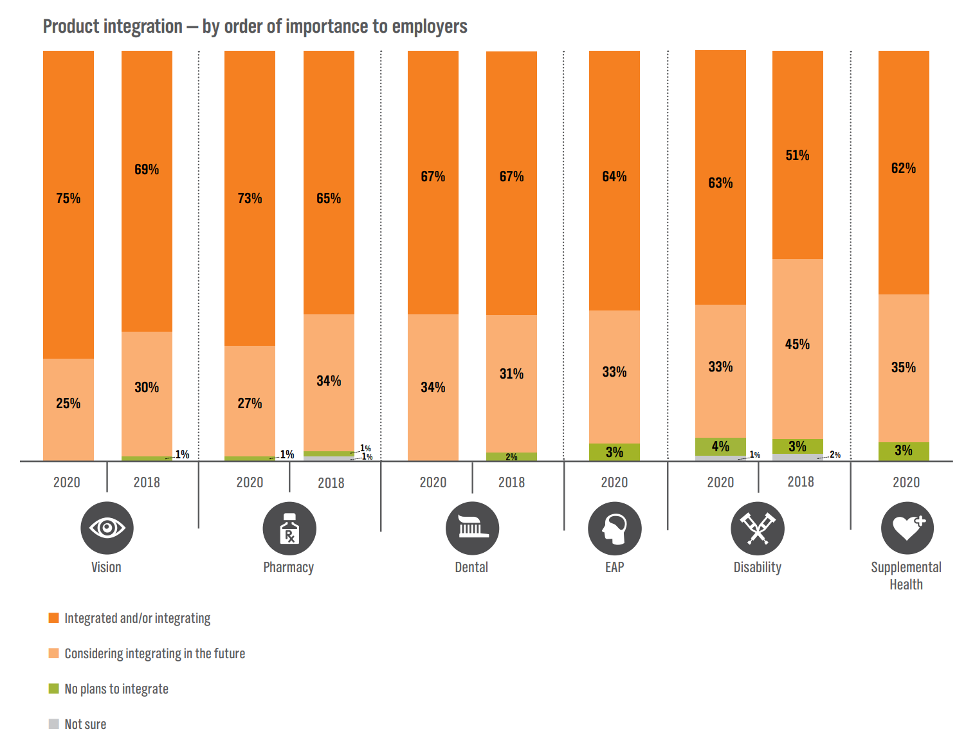Every two years, Anthem publishes their Integrated Health Care Report, which explores how integrating data from medical, pharmacy, and ancillary plans can enhance population health clinical programs. Since Anthem began this research project in 2014, integrated health care has been on the rise. This year marks the first time the majority of employers (56%) are integrating at least some of their benefits. This is an increase of 11% from 2018 and nearly doubled from 2016. The vast majority (71%) of these employers are integrating the health benefits with a single insurance carrier rather than using technologies to connect multiple carriers. For the purposes of the study ancillary plans include dental, vision, disability, absence management, Employee Assistance Program (EAP), and supplemental health coverage.

Like many emerging policies in the employee benefits world, larger employers are leading the way in integrating health benefits, with 64% of employers with more than 1,000 employees doing so relative to 35% of companies with 99 or fewer employees. Fifty-three percent of employers with 100 to 999 employees are integrating health benefits.
Vision and pharmacy benefits are the top products employers have or are in the process of integrating. Once employers decide to pursue integrated health care, the breadth of offerings they plan to include is fairly large, with no specific product category being excluded definitively by more than 5% of companies (disability being the highest with 4%).

The most important integrated care capability cited by employers includes connecting all doctors—including eye doctors and dentists through electronic health records. Automatically identifying and notifying employees of an extra dental cleaning and sending health reminders to engage employees in their health plan and overall health were the other top capabilities cited in the survey.
Value From Integrating Health Benefits
Integrated health care benefits facilitate actionable data to be shared among doctors and other health care providers, allowing them to provide better diagnoses and treatments, detect coverage gaps, and guide individuals toward prevention and care management. They have been shown to increase employee engagement in well-being programs, lower health care costs, improve health outcomes, simplify employers’ benefits portfolio, and deliver a better health care experience for both employers and employees. Based on the survey results, employers agreed that integrated health benefits resulted in happier and more productive employees
The way employers measure the success of integrated health benefits varies. A small majority (51%) measure success via employee engagement while some (29%) measure success with a traditional return on investment model.
About The Report
Using an independent research company (TRC Insights), Anthem has been tracking employers’ progress integrating pharmacy and ancillary benefits with medical coverage. The fourth edition of the report, which was fielded in April 2020, provides perspectives on how the behaviors, attitudes, expectations, and barriers to success have changed over the last six years. In 2018, the research started tracking findings by three employer types: (i) small group (2-99 employees), (ii) large group (100+ employee), and (iii) national (1,000+ employees).












